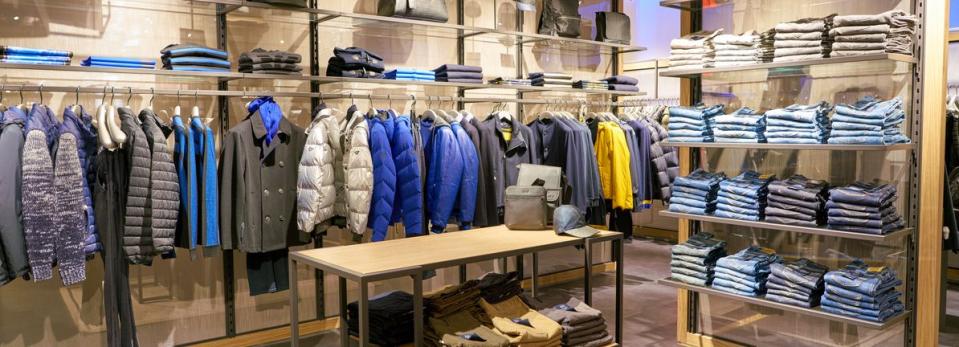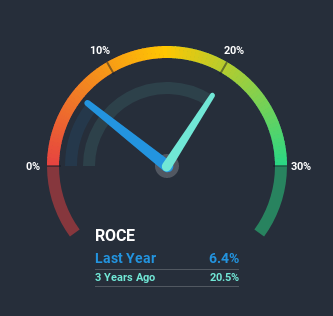We're Watching These Trends At Superdry (LON:SDRY)

What are the early trends we should look for to identify a stock that could multiply in value over the long term? Typically, we'll want to notice a trend of growing return on capital employed (ROCE) and alongside that, an expanding base of capital employed. Ultimately, this demonstrates that it's a business that is reinvesting profits at increasing rates of return. Although, when we looked at Superdry (LON:SDRY), it didn't seem to tick all of these boxes.
What is Return On Capital Employed (ROCE)?
Just to clarify if you're unsure, ROCE is a metric for evaluating how much pre-tax income (in percentage terms) a company earns on the capital invested in its business. Analysts use this formula to calculate it for Superdry:
Return on Capital Employed = Earnings Before Interest and Tax (EBIT) ÷ (Total Assets - Current Liabilities)
0.064 = UK£35m ÷ (UK£786m - UK£240m) (Based on the trailing twelve months to October 2019).
So, Superdry has an ROCE of 6.4%. In absolute terms, that's a low return and it also under-performs the Specialty Retail industry average of 11%.
Check out our latest analysis for Superdry
In the above chart we have measured Superdry's prior ROCE against its prior performance, but the future is arguably more important. If you'd like to see what analysts are forecasting going forward, you should check out our free report for Superdry.
How Are Returns Trending?
When we looked at the ROCE trend at Superdry, we didn't gain much confidence. Over the last five years, returns on capital have decreased to 6.4% from 14% five years ago. On the other hand, the company has been employing more capital without a corresponding improvement in sales in the last year, which could suggest these investments are longer term plays. It may take some time before the company starts to see any change in earnings from these investments.
In Conclusion...
In summary, Superdry is reinvesting funds back into the business for growth but unfortunately it looks like sales haven't increased much just yet. And investors may be expecting the fundamentals to get a lot worse because the stock has crashed 91% over the last five years. All in all, the inherent trends aren't typical of multi-baggers, so if that's what you're after, we think you might have more luck elsewhere.
One more thing to note, we've identified 2 warning signs with Superdry and understanding these should be part of your investment process.
While Superdry isn't earning the highest return, check out this free list of companies that are earning high returns on equity with solid balance sheets.
This article by Simply Wall St is general in nature. It does not constitute a recommendation to buy or sell any stock, and does not take account of your objectives, or your financial situation. We aim to bring you long-term focused analysis driven by fundamental data. Note that our analysis may not factor in the latest price-sensitive company announcements or qualitative material. Simply Wall St has no position in any stocks mentioned.
Have feedback on this article? Concerned about the content? Get in touch with us directly. Alternatively, email editorial-team@simplywallst.com.

 Yahoo Finance
Yahoo Finance 
